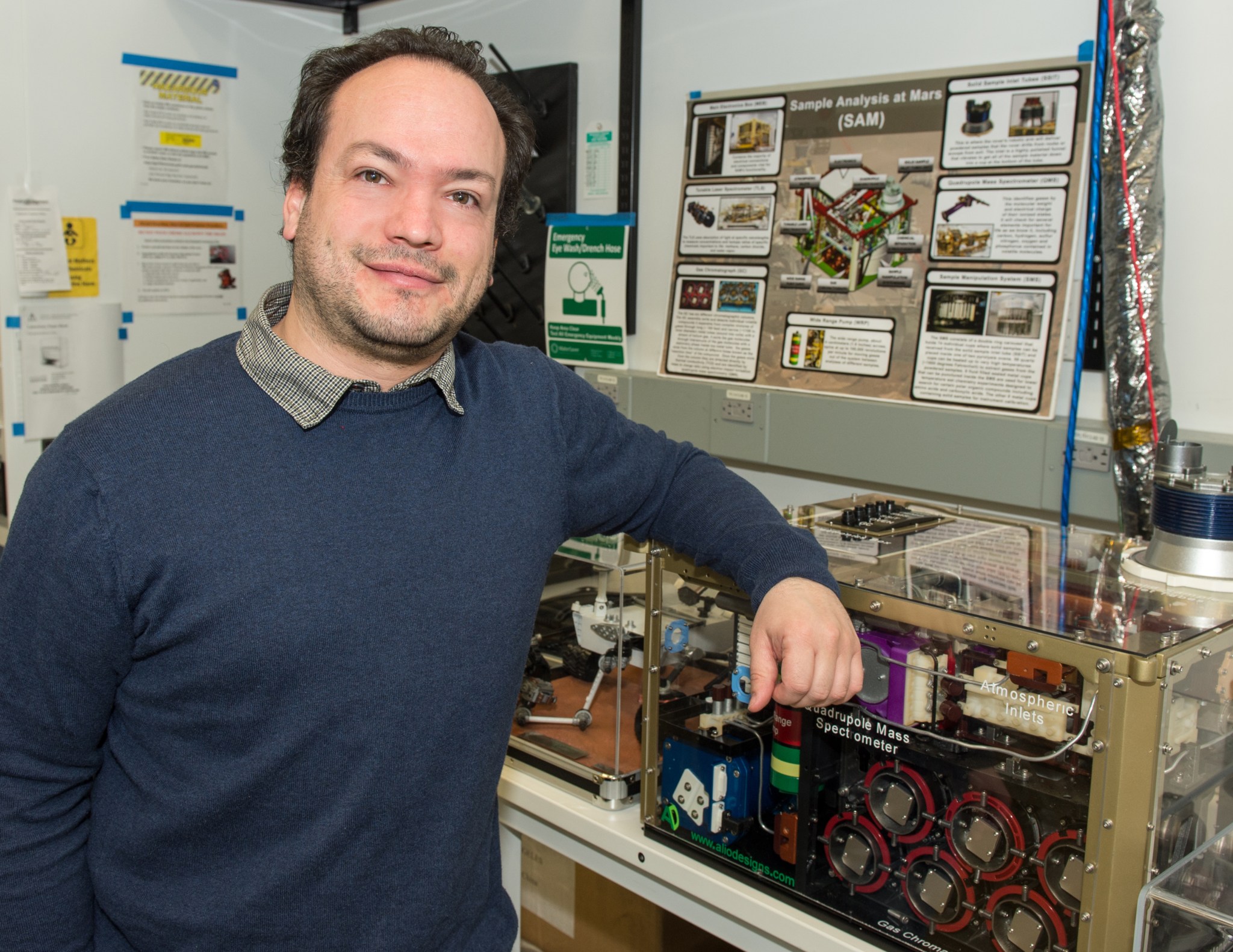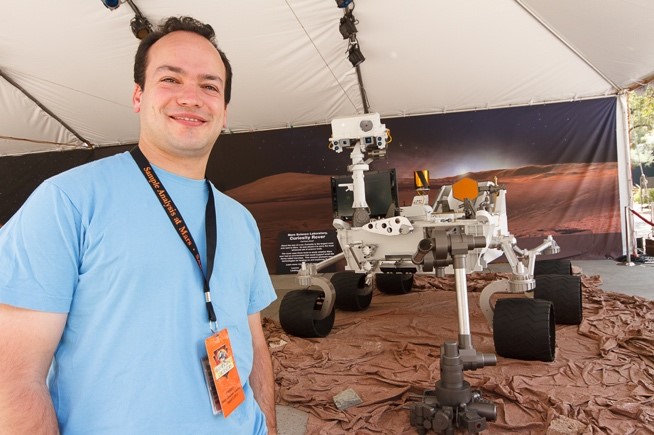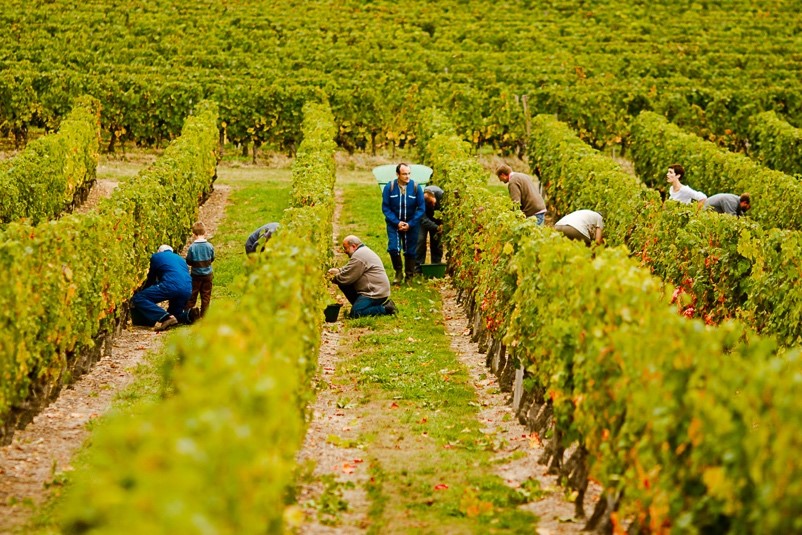Name: Samuel Teinturier
Title: Physicist, Research Engineer and Member of the Mars Science Laboratory’s Science and Tactical Team
Organization: Code 699, Planetary and Environmental Laboratory, Sciences Directorate
What do you do and what is most interesting about your role here at Goddard? How do you help support Goddard’s mission?
I work with the Sample Analysis at Mars (SAM) instrument currently on the Mars rover Curiosity, which has passed over 2,200 sols on Mars, A sol is a day on Mars. I help with tactical operations, with both the payload downlink lead (PDL) role which receives the data from the Rover’s instruments and the payload uplink lead (PUL) role which sends commands to them. I also perform a lot of experiments on the duplicate SAM Testbed instrument here at Goddard.
What is your background?
I was born in France. In France, children are often guided into specialized schools from a very young age. Although I was always interested in science, I attended a specialized school for music. I sing choral music and play the piano and organ.
After I graduated from the French equivalent of high school, the baccalaureate, I changed directions and decided to study physics with computer science. I got a magistère degree and a Ph.D. in physics and engineering from the University of Paris-Orsay. I began a post-doc in Orsay and the nearby École Polytechnique concerning models of ocean vortices.
How did you get from France to Goddard?
In 2009, CNRS Laboratory in Paris (the LATMOS) asked me to join them in building a component for SAM and helping with the data analysis. In 2014, the SAM mission asked me to join them at Goddard. I was overjoyed!
What do you do as a member of the Mars Science Laboratory’s Science and Tactical Team?
SAM is constantly monitored. The monitoring individuals change every sol and by shifts within each sol. Our MSL team has about 300 scientists and engineers. Of these, about half are on the Tactical Team. The SAM team has about 30 to 50 scientists and engineers.
MSL has ten instruments. Each instrument has a different PDL each sol, who receives the data from MSL, and a different PUL, who sends data back to MSL.
For some shifts, I am a PDL for SAM. As a PDL, I download all the data from Curiosity, which received the data from SAM. First, we make sure that the instrument continues to be healthy and that the activity from the previous sol was successful. Then, we share any science data with the SAM science community. The raw data is so complex that only the SAM community can at first understand it.
For other shifts, I sometimes work with the PUL for SAM. I help send the script, which can be about 2,000 lines of code, to SAM with instructions about what SAM should do the next sol.
Being a PDL for a day is somewhat like being a concierge doctor on call in the emergency room. It can be very stressful, especially if we discover that SAM is “sick” and needs immediate medical attention. Being a PUL is also stressful, because any mistakes in code could give SAM a “heart attack” which might also harm the other instruments.
Tell us about your work with the Testbed duplicate of SAM here at Goddard?
SAM is the size of a microwave oven. We keep a duplicate here so that we can test our scripts and experiments in real conditions.
We have a Mars chamber at Goddard which we use to replicate the atmosphere on Mars. The actual chamber is essentially a big, extremely cold freezer that can go as low as minus 50 degrees Celsius (about minus 58 F). The chamber can also change the atmospheric pressure to almost 200 times that of the Earth and that which exists on Mars.
The Testbed is used to test what we will do on Mars. So we write a script for an experiment and then run the script in the Testbed. We call this a “run for the record.” If all goes well, we can then send the script to SAM on Mars.
The second main use of the Testbed is helping us understand the complex science sent by SAM on Mars to Earth. Curiosity can drill under the Martian surface and extract samples for analysis. For example, we may try to duplicate an experiment done by SAM such as a rock analysis, using an analog sample on the Testbed. An analog sample isa rock with similar properties to a sample SAM analyzed on Mars.
What do you hope to learn from SAM?
The SAM team is interested in the organic components on Mars. We are pleased that we have found traces of organic compounds, which could have a relation with the possible past habitability of the Red Planet.
Does music remain a part of your life?
Yes, music still remains a big part of my life and brings me great joy. The first thing I bought with my first paychecks in the U.S. was a Kawai upright piano followed by an electric piano. Also, sometimes I am able to play organs in different churches or concert halls, which is really nice. Each organ is very unique, each environment is different. So I have to discover how each organ sounds in its particular environment. Playing an organ in a new place is like conducting a musical experiment.
I was teaching piano to kids in France. I may start teaching here later.
I am passionate about Bach and the Baroque musicians. I really love Russian Romantic composers like Rachmaninoff. Now that I am in the U.S., I recently discovered jazz improvisation, Latin jazz music, and experimental and electronic composition.
What is your family connection to the Loire Valley?
Many of my family live in the Loire Valley, famous for its vineyards. One of my uncles owns vineyards in Bourgueil. He specializes in Saint-Nicolas-de-Bourgueil, a type of red wine raised there. The Loire valley has a unique soil which is called tuffeau, a very porous, dry and somewhat smooth soil similar to chalk that produces this special wine. Wine is all about the soil! When possible, I help with the family grape harvest. Each time I go home, I bring back some of our delicious wine.
Did your immediate family remain in the Loire Valley?
My parents are still near the Loire Valley. One of my sisters is studying the link between education, politics and religion in Canada. Another sister is a school teacher and has a family near the vineyards in France. My third sister is a physics teacher in China.
Who inspires you?
My maternal grandfather was a medical doctor in the Loire Valley. He was interested in science and technology and taught me to love science. His father was born and raised in Corsica. My parents gave me their love of music. All of my sisters also play musical instruments and sing.
By Elizabeth M. Jarrell
NASA Goddard Space Flight Center































